Introduction
Brief explanation of what Chakra Colors are:
Chakras are your body’s energy centers, which govern all its functions. Everything from your organs to the immune system and your emotions is part of their jurisdiction. According to ancient Indian philosophy, “Chakra” is a term used in alternative medicine.
This word is Sanskrit for “wheel” or “circle,” it is a correct description because the chakras are spinning wheels of energy that correlate with massive nerve centers in the body.
They all have specific tasks and control of a person’s physical, emotional, and spiritual status. There are seven main chakras, according to Indian teachings from several thousand years ago, running from the base of the spine to the top of the head.
They operate on a different vibrational frequency, color, and aperture but are still part of the individual psyche. Our psychic health is one thing that relies on these chakras remaining balanced – imbalance = pain, dysfunction = disease, The chakra correlates with the mental-emotional issue.
The Seven Chakras Colors, Meanings, and Locations:
The seven chakras comprise one of the critical features of the subtle body in classic Indian spiritual doctrines, particularly Hinduism and Buddhism. All seven chakras are directly linked to the crucial aspects of human existence and apply to the physical, celestial, rational, and divine states of our presence. They create an integrated model of these states.Here’s an overview of what each of the seven chakras means:
-
Root Chakra (Muladhara):
-
- Color: Red
- Location: Base of the spine
- Meaning and Symbolism: Survival, stability, security, and basic needs
- Effects to physical and emotional health
The first of the seven primary chakras operating within the human body is the Root Chakra, traditionally called Muladhara in Sanskrit. Therefore, as the foundation center of the system, it is anchored at the base of the spine near the coccyx and is associated with Earth as its element. The characteristics include. Hence, red refers to the chakra by symbolizing the vibrant and pulsing energy and healing, life, and survival.
Meaning and Symbolism:
- Survival Instincts – Muladhara is our survival instincts and the primal urge for safety, security, and stability; “this chakra rules our primitive self.”. The root chakra is the chakra of our basic needs and conditions that meet food, shelter, and safety requirements.
- Grounding – The Root Chakra roots us to the physical world, giving roots a sense of stability and borders with the earth: “the roots keep the body connected to the world.
- Physical Health – This chakra sways the physical body; it includes the spine, legs, feet, bones, and adrenal glands.
Imbalance and Symptoms:
Blocked or imbalanced: Insecurity, fear, anxiety, and instability can indicate a blockage or imbalance in the Root Chakra. Improperly functioning Root Chakra can manifest as lower back pain, immune system disorders, diarrhea, and other digestive problems.
Excessive: An overactive root Chakra might lead to materialism, greed, overeating, and an obsession with security or things.
Deficient: If the person’s Root Chakra is not doing its work properly, the person will feel unrooted, out of place, and trapped as far as life security is concerned.
Balancing Techniques:
When meditating, consider visualizing red energy at the base of your spine. Doing so can help you retain a connection to Earth. Ground poses in yoga, including Tadasana or Mountain Pose, Virabhadrasana or Warrior Pose, and Vrksasana or Tree Pose, may also be useful. This will also aid in strengthening and balancing the Root Chakra, so repeat earth affirmations while making the count. One can ground oneself in life by engaging in some physical activity, such as gardening.
Based on primary chakra, it is the source, mainly associated with fundamental survival instincts and our requirement to be safe. This is intimately associated with the physical world and anything that guarantees our safety or connects us to the ground. When we balance and nourish the chakra, we feel inner calm and security. The outcome is disability and vitality.
-
Sacral Chakra (Svadhishthana):
-
- Color: Orange
- Location: Below the belly button, above the pubic bone
- Meaning and Symbolism: Creativity, sexuality, pleasure, and emotional balance
- Impact on relationships and self-esteem
The second chakra is the Sacral Chakra. This is the area of the lower abdomen. It is just below the navel. The sacral chakra deals with creativity, well-being and enjoyment.
The sacral chakra may be associated with the following colour, which is primarily related to orange. Orange epitomizes ingenuity cre, activity, and life energy.
Meaning and Symbolism:
Svadhisthana: responsible for creativity, passion, the ability to feel pleasure from life. A person’s seating determines their ability for creative expression, their sensuality, and the capacity to enjoy pleasure in its simple form .
Furthermore, this sitting shows an individual’s emotional aspect . Svadhisthana affects an individual’s sexuality, an individual’s capacity to find pleasure in their sensual experience, and the possibility to draw other people on an emotional level.
Imbalance and Symptoms:
Blocked or imbalanced: the first type arises when a person cannot create anything, feels a lack of passion or life pleasures, or tries to escape these emotions, especially in intimate relations.
Excessive: an overactive Sacral Chakra manifests through overwhelming impulsivity, addiction to pleasure and activities connected to it, or a person is too reliant, sensitive, and moody.
Deficient – when one leads one of the previous forms without the other. As a result, creativity is rarely performed, emotions are not expressed, happiness and desire are unfelt, and pleasure and intimacy rarely occur.
Balancing Techniques:
Meditation For nourishing: visualize a healthy, essential spinning of orange energy in your lower abdomen.
Yoga For balancing: practice yogic postures that stimulate and balance the Sacral Chakra; the best ones are hip-opening poses such as Pigeon Pose and Bound Angle Pose.
Creative expression: Do the creative action that causes you to feel like the best version of yourself- be it painting, dancing, writing, or playing a musical instrument. *
Emotional release: Allow yourself to feel the feelings, express the emotions, and vent the steam. Use journaling, talking to your best friend or therapist, and physical practices such as breathwork or bodywork.
Sacral Chakra, or Svadhishthana, is another important energy centre because it is connected with creativity, passion, and well-being experienced in all aspects of one’s life. If one’s Sacral Chakra “ is balanced and in harmony , she or he will mention creativity, pleasure, and emotional balance in life, so one will be full of energy and feel fulfilled.”
- Solar Plexus Chakra (Manipura):
-
- Color: Yellow
- Location: Stomach area
- Meaning and Symbolism: Personal power, self-confidence, and the ability to channel
- Influence on personal growth and decision-making
Solar Plexus Chakra/Sanskrit/Manipura — is the third Chakra of the seven primary Chakras. The Solar Plexus Chakra is responsible for personal power and strength, self-confidence, and the ability to channel energy. It is found in the upper abdomen, near the stomach. Solar Plexus Chakra is associated with. Yellow is the colour of energy, brightness, and strength of mind.
Meaning and Symbolism:
As Sacral is linked to our perspective of personal power, self-esteem, and independence, the ability to take initiative and obtain what we want and confidence and assertiveness are linked to Solar Plexus.
Sacral Chakra also extends to our belief structure surrounding our identity and belongingness.Confidence, Assertiveness, and the Ability to Act and Get What We Desire. — Even our structure is influenced by solar energy.
The solar system also exists in the digestive system, including the stomach, liver, and pancreas, and has a role in metabolism or handling.
Imbalance and Symptoms:
Blocked Or Imbalanced: In the case of an imbalance, one can imagine savages in the form of insecurity, low self-esteem or no self-esteem, indecision, or a lack of understanding of one’s abilities. It can begin with stomach pains, ulcers, or even different eating Obstacles.
Excessive: excessive chakra will suggest that a person is dominating, aggressive, or specially controlled. On top of that, they can feel that supreme breach over all humans or the genius of outside energy.
Deficient: A person with a deficiency in your Solar Plexus chakra has no control, instances or conditions, or desire to be seen by Sir or I. They are paralyzed with fear of denial and cannot push away.
Balancing Techniques:
Imagine a radiant, bright yellow energy beaming from your Solar Plexus Chakra, propelling you into a confident, self-assured state. This might be an accurate indicator for your muse!
Yoga and Physical Activities – Focus on yoga poses that trigger and stabilize the core to build resistance and vitality in the Solar Plexus Chakra, such as Navasana or Virabhadrasana.
Self-empowerment activities – concentrate on activities that inspire self-confidence and assertiveness. Some ideas include establishing and reaching goals, working with affirmations, or trying fear.
Healthy diet: Ensure you eat a balanced diet that can sustain your metabolism and digestive wellness. You’ll want a rich fibre diet, which can be found in antioxidants and other healthy foods.
-
Heart Chakra (Anahata):
-
- Color: Green
- Location: Center of the chest, just above the heart
- Meaning and Symbolism: Love, compassion, acceptance, and trust
- Its role in relationships and self-love
The fourth primary chakra out of the seven chakras in the human body is the Heart Chakra, known as Anahata in Sanskrit. It is placed in the center of the chest and links the lower three earthly chakras with the upper spiritual chakras. The symbolism of the Heart Chakra is described as follows: Color: Generally, the Heart Chakras are drawn in green, a color that symbolizes love, compassion, and unity. Simultaneously, it might stand for pink, which means pure love or emotional renewal.
Meaning and Symbolism:
Love and Compassion: Anahata means feeling love, compassion, and empathy. However, the chakra has qualities such as being kind to other people, forgiving, and acceptance.
Connection and Unity: Anahata characterizes the relationship the self has with the self and others. It means being unified, compassionate to all other sentient beings, and comprehending the universe.
Emotional Healing: Last but not least, the other characteristic of the heart chakra is emotional healing. The Anahata opens, colors, and heals emotional wounds.
Imbalance and Symptoms:
Blocked or imbalanced: It may not be easy to establish meaningful Connections, abrupt “attacks” of isolation or hopelessness, a lack of the ability to feel secure around other people, jealousy, envy., and a failure to forgive the past.
Excessive: are reckless in connection and dependent behaviours. Or a leaky heart chakra is a usual sign of excess. One may prematurely commit to long-term relationships or even see fuming away around their partner: “Why should I give myself my best possible effort?
Deficient: feelings of alienation, spiritualism, and dehumanization * can be observed. One cannot walk one’s path or endure the upheaval of love.
Balancing Techniques:
Imagine a shining green or pink light emanating from your Heart Chakra, flooding your entire form with feelings of love, tenderness, and comforting warmth.
Practice postures such as camel pose, bridge pose, and fish pose for activating, energizing, and cultivating equilibrium in your Heart Chakra.
You can cultivate self-love and self-forgiveness through self-support, empowering affirmations, and frequent self-reflection. Admit the mistake and forgive yourself and others because failure is required for learning and individual success. This action eases psychological tension and allows your heart to open up.
Actively assert kindness and tenderness toward those in your presence or virtually to form a foundation of relationship, compassion, and belonging.
-
Throat Chakra (Vishuddha):
-
- Color: Blue
- Location: Throat
- Meaning and Symbolism: Communication, self-expression, and truth
- Importance in expressing thoughts clearly and with honesty
The fifth of the seven major chakras of the human body is the Throat Chakra, called Serbo-Croatian. It is situated in the thyroid region and is connected to communication, self-expression, and the true voice. Here are some fundamental facts about the Iroquois: Most frequently linked with other throat chakra is the blue colour, representing clarity, truth, and expression. Light blue and turquoise are other colour variations.
Meaning and Symbolism:
This chakra controls communication and expression. Thus, talking is expressing one’s feelings, needs, and ideas. Therefore, the Throat Chakra controls what the person speaks and whether what he says is real; this Chakra also “conveys within it the ability to speak one’s mind, voice opinions, and speak one’s truth”. This Chakra is also related to “the ability to have one’s creativity and abilities expressed”. See for yourself; the last relates to “understanding what is said verbally and subverbally”.
Imbalance and Symptoms:
Blocked or imbalanced: If the throat chakra is blocked or imbalanced, it is likely to mean difficulty speaking up for oneself or one’s truth or experiencing other people constantly misunderstand or ignore what is said. It manifests in throat problems, thyroid issues, or persistent neck and shoulder strains.
Excessive: an overactive Throat Chakra can mean verbal diarrhoea or talking too much, dominating conversation spaces, or being overly critical of other people, as well as over gossiping and spreading rumours.
Deficient: If the throat chakra is deficient, it will likely manifest as shyness, lack of confidence, social anxiety, or fear of speaking in public. This might also mean the inability to express oneself clearly and coherently or suppression of a voice and creativity.
Balancing Techniques:
Throat Chakra: Visual a bright blue light shining from your Throat Chakra and meditate; it clears away blockages and energizes your confidence and empowerment so that you may say your truth in peace.
Throat area yoga: Participate in poses that may open and energize the throat area, such as Fish Pose, Shoulder Stand, and Camel Pose.
Creative expression – speak and non-speak: Activities like writing, singing, creating, painting, dancing, and writing allow you to express yourself creatively, speak, actively engage in mindful communication, and embellish if at all possible. Nevertheless, stay present for the other, non-judge, and do not interrupt.
Finally, the Throat Chakra, Vishuddha, is developed and balanced to be a power centre of communication and self-expression of an authentic voice. With my destiny and development work on Vishuddha Chakra, I have fostered the ability to communicate clearly and confidently, accurately and efficiently convey messages to other people, and convey wisdom, truth, and authenticity. Finally, this is Vishuddha Chakra, the Throat Chakra, which needs to be developed and balanced.
-
Third Eye Chakra (Ajna):
-
- Color: Indigo
- Location: Forehead, between the eyebrows
- Meaning and Symbolism: Intuition, imagination, wisdom, and the ability to think and make decisions
- Impact on intuition and mental clarity
The Third Eye Chakra, which is also the third eye, is the third of seven main human body chakras. This is located on the forehead directly above one’s eyebrows and is one’s intuition, insight, and inner wisdom chakra.
The Third Eye Chakra characteristic is III. Colour. As a rule, the Third Eye Chakra is connected with indigo, meaning intuition, perception, and inner vision. It can be visualized in other shades, from deep blue to purple.
Meaning and Symbolism:
Intuition and Insight: Ajna is the chakra of inner wisdom, intuition, and insight. The third eye chakra indicates a person’s ability to see beyond their physical reality and into higher states of consciousness.
Inner Guidance: Furthermore, it represents inner guidance. The Ajna chakra guides people spiritually and helps them decide what is good for their best interest.
Imagination and Visualization: Moreover, imagination, creative expression, and visualization are associated with the third eye chakra. It enables people to dream and envision their desires and aspirations and bring them to life.
Imbalance and Symptoms:
Blocked or imbalanced: challenging to trust intuition and the capacity to know what one knows and doubt about everything; disconnected from one’s internal knowing, or confusion and indecisiveness are difficult to overcome. One of the symptoms is permanent headache, migraines or vision problems, are also affected.
Excessive: addiction can easily cause drug addiction to dreams or escapism, and fantasy is an alternative substitution to reality; all provoke paranoia and delusion.
Deficient: Visioning and reconciliation are challenging, and no imagination or connection from one’s internal wisdom and intuition are applying this, trying to solve a problem only with logical thinking without using one’s inner truth.
Balancing Techniques:
Meditation:Visualize an indigo light emerging from your Third Eye Chakra. This light shines, activates your inner vision, and allows you to bring insight and intuition into focus in your daily lives.
Yoga: The Third Eye is stimulated and charged by Child’s Pose, Eagle Pose, and Downward-Facing Dog yoga pose.
Mindful Practices: Mindfulness and being in the now, whether routine breathing meditation or other exercises, allows you to reconnect with your body’s understanding, alertness, discipline, or imagination.
Dream Journaling: By recording your thoughts and dream diary, you may see patterns in the information your subconscious is conveying and start sharpening a sense of how to decode them. This lets you take authority over your dream landscape and learn how it works.
-
Crown Chakra (Sahasrara):
-
- Color: Violet or White
- Location: Top of the head
- Meaning and Symbolism: Spiritual connection and transformation, consciousness, and inner and outer beauty
- How it connects individuals to the universe and their higher selves
Image Credit – wikipedia.org
The seventh and final chakra of the seven primary human body chakras is the Crown Chakra or Sahasrara in Sanskrit.
It is found at the top of the person’s head and symbolizes the gate to transcendental awareness, spiritual awakening, and connection with God.
The following are some of its distinguishing features: Color is most frequently depicted with a violet or white shade to represent light, pureness, and godliness. However, it can also be depicted with all the other tones or maybe the shining divine light:
Meaning and Symbolism:
Spiritual Connection: The Sahasrara means our connection point to the most praeternatural, infinite consciousness, the boundless wisdom of the cosmos. Essentially, it unites ordinary reality with the world of spirit.
Higher Consciousness: It is in charge of our abilities to access the truths the universe presents to us, all cosmic knowledge, and spiritual illumination.
With assistance from this Chakra, one can transcend the humanity of one’s ego and unite with the divine. Simply put, the Crown Chakra allows us to feel oneness and unity with all entities and the universe.
Imbalance and Symptoms:
Blocked or Imbalanced: The stuck or partly blocked Crown Chakra can manifest in feeling cut off from the divine, spiritual numbness, and the sensation of losing grasp of something more significant than themselves.
This can trigger mental illnesses like depression, anxiety, or an existential crisis of sorts.
Excessive: The overstimulated Crown Chakra can manifest in more bypassing, i.e., unhealthy spirituality, which can also present itself as more god complexes or the feeling one’s better than the rest, with less and less connection to reality.
Deficient: A deficient Crown Chakra can present as more overall psychic imbalance, not grounded or focused enough, or not enough faith or surrender to the grand scheme. Thus, there is also a need for more energy or creativity.
Balancing Techniques:
Meditation – meditate with the vision of radiant white or violet light from your Crown Chakra spreads through you, connecting you to the divine and pointing the way for your spiritual enlightenment. Yoga – practice yoga postures that activate and enliven the Crown Chakra; also include Headstand, Lotus Pose, and Corpse Pose.
Spiritual practices—Practice spiritual activities that create a deeper link with the divine, such as prayer, chanting, or meditation, contemplating God’s grace.
Serving: work with this chakra to increase your selflessness and judgment by your strong control to help others and do good as you are selfless and divinely inspired by an act of compassion, kindness, and courage that opens your heart and uplifts your soul.
Crown Chakra: Sahasrara Is the Crown Chakra an energy nucleus that relates to one’s spirituality, higher cognition, and immense wisdom from the divine? It offers the power to awaken the true root of the spirit, become illuminated, and revel in a life overloaded with goals, significance, and divine affections.
Read: What is Yoga Unlocking Inner Serenity: Transform Your Life with Yoga
Benefits of balancing chakras:
In general, the obtainment of overall health and well-being is associated with the chakras balanced the fact that Balanced chakras help remove blockages and reshape imbalances of energy centres, resulting in a free flow of the vital life force energy prana or Chi throughout the body. The improved flow of energy revitalizes, energizes, and enhances physical health.
Each chakra is connected to particular organs, glands, and body functions; hence, the balance of chakras leads to balancing each system of the body to function independently, leading to one being physically fit and healthy.
Since emotional forces are closely linked to chakra performance, it is conceivable that they will help stabilize emotions by quickly dissolving blockages caused by bottled emotions.
The clearing of energy pathways of chakras can significantly increase mental acuteness, motivation, and problem-solving abilities, enabling mind calmness, clear thinking and creativity.
Balance chakras are used to calm stress and pressure in one’s body, leaving one with peace and tranquillity.
It affects a person’s wellness and the rapidity of chakra revolution, which enhances conversation and empathy and affects the accord of the individual to loving understanding. Chakra equilibrium is a clear result of spirituality.
The transient exposure microscopy’s vividness helps the mystery grow manifestation and stabilize social stability. Balance chakras help to deepen introspection, intuition, and inner senses by floating the third eye and the crown chakras.
Via the mind, an exclusive contact pin is overlooked; one can gain premises about yourself/your life objective. It may answer a wholesome existence, i.e., not over the individual sensory mechanism but the mind, the ether and the physical realms.
The Importance of chakra colors in holistic healing and spiritual practices:
Color is one of the most crucial aspects of holistic treatments and spiritual quests, serving as a connection between the unity of the body, spirit, and mind. Each chakra has a color that resonates with the given chakra’s frequency , which refers to the speed at which the chakra vibrates.
However, it is essential to understand that they are not merely symbolic, and they contribute to the free flow of energy and eventual balance, thus determining the emotional, spiritual, and physical selves of a person.
Understanding what color means for the chakras can have the following benefits in healing, meditation, and general well-being:
Vibrational Matching: Every chakra colour has a distinct vibrational frequency for a similar red, green, or violet colour. Therefore, in alternative medicine, colours align the body’s vibrations.
In other words, if a person has problems with the fourth chakra, the heart, then focusing on the green colour would make the individual care more and have more love.
Color Therapy (Chromotherapy): Healing is based on the influence of the visible spectrum of light and colour on a person’s mood and physical or mental condition.
All of their color can influence the work of chakras and, therefore, heal them. Blue influences the throat chakra; from this aspect, it can help people restore and heal their communicative abilities and self-expression skills.
Visual Meditation and Visualization: Using speeds up and enhances meditation. * When you focus on meditating while thinking about a colour, you can unblock, energize, or balance that chakra. It, in turn, can speed and enhance emotional and physical healing.
Healing Environments:We can also consider that different colours in the home create a certain atmosphere and affect our psychological state while in the room.
If we know what shades refer to the chakra, we can create an atmosphere that benefits us. For example, the room with a predominance of violet and white colours creates peace, clarity of thought, and spirituality, which are the characteristics of the crown chakra.
Spiritual Growth and Self-awareness: Interacting with chakra colours helps reach a deeper connection to the spiritual self in every aspect.
It also identifies issues in various aspects of life and creates a strong desire to treat them. Chakra colours are pillars in almost all forms of healing and spiritual practice. They provide:
- A tool for manipulating the subtle energy flow of the body.
- Creating a state of healing.
- Balancing.
- Spiritual rejuvenation.
Read Article : How do I know which chakras are blocked | Complete Guide |
Overview of the chakra system’s role in balancing energy within the body:
When one experiences the chakra colours, it helps one to establish intimacy with one’s spiritual self. In addition, noticing the unbalanced parts of their lives enables one to recognize those aspects to which they need to give priority. Chakra colours are important in almost all healing and spiritual processes.
They provide an avenue for using the body’s subtle energy, which makes it possible to heal, balance, and become spiritually awakened.
Several holistic healing efforts and spirituality are based on a model of the chakra system, which provides an understanding of how energy moves through the human body and contributes to human general well-being.
Relevant information exists on the importance of the chakra system in helping with energy balance. The system has seven significant energy centres running from the ground of your spine through the crown of your head.
These centres are associated with specific human physical, sentimental, and soul aspects.
Energy mobility: However, there is a revelation that a primary idea concerning the life power flows inside the body through the means referred to as the nadi.
The chakras are the spots where the energy flows to move according to the body.
Energy balances: Whenever these centres open, stay aligned, and balanced, the flow of life power moves freely, keeping someone healthy and full of life. However, the waters of body injury, worn-out hateful feelings, and discomfort may cause the chakras to be inconsistent until the human gets tired.
Physical Health: Every chakra relates to specific corporal parts and under tasks, such as organs and glands. Nonetheless, energy blockages or differences in the seven customarily manifest as physiological maladies within the organ functions.
Emotional and mental health: They are also crucial since certain emotional and mental circumstances influence those chakras.
For instance, if the feeling of loneliness or a lack of confidence forms, the heart chakra is uninspired; conversely, a well-balanced throat chakra generates an important oration that also carries oneself. Indeed, these variations make a difference, controlling one chakra imbalances; one can enhance one’s capacity to handle one’s feelings and clarity of mind.
Spiritual connections: Apart from their role in physical and mental health, chakras also work by securing spiritual maturity. A home is associated with the affidavit and crown chakra, which are linked with the higher brain. When a chakra is immaculate and well-adjusted, it allows someone to state their spiritual feelings about a close connection.
Holistic treatment: Four of the well-being chakras are found in alternate drugs. Contemplations including yoga, potentiality, revitalization, and aromatherapy progress put the reflection in which the body does by ungrudging the chakras, chuckling out restrictions, releasing energy, and recouping it to the opposite spot, in aggregate.
How did the chakras get their colors?
I want to note that the colours of chakras are directly connected with ancient spiritual traditions, particularly Hinduism and Buddhism – the chakra system was later developed in Buddhism. The colours of chakras are not randomly taken, but the reasons are as follows:
Energetic spiritual: The first reason is that each chakra has its energetic properties, and each of them vibrates at its frequency, precisely at that frequency that causes the colour to be part of the visible light spectrum.
For instance, the Root or First Chakra has the colour red because it vibrates at a characteristic red frequency, and the colour of the Crown or Seventh Chakra is violet or white because the frequency of vibration is exactly this that refers to violet.
Another reason is the design of the colours – spiritual symbolism that refers to one of the characteristics of human consciousness, energy, and spirituality.
For this reason, the colour of the Root Chakra is red – the colour of vitality and strength; the Heart Chakra is green – the colour of love; the Throat Chakra is blue – the colour of communication. The third reason is cultural, as is shown in Buddhism-inspired artwork and mandalas and the colours of chakras are painted.
The fourth reason is personal – it is the perception and personal practice of meditation and energy work. For some people, the colours of chakras are all clear and are done during meditation.
People do not see the colours of the chakras, but they can feel the energy.
Thus, chakra colours are very meaningful and valuable because they are a tool for working with energy.
Read This Article For Yoga Guide : How Yoga Works – Benefits and Techniques | Yoga Journal
Read This Article For Yoga Ball Exercises Guide : 20 Yoga Ball Exercises to Level Up Your Workout Routine


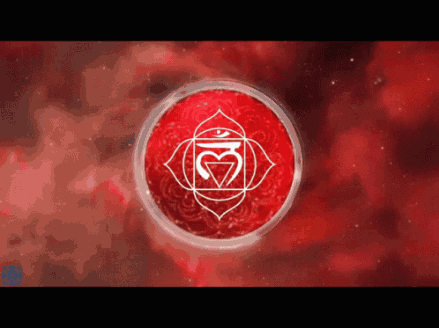
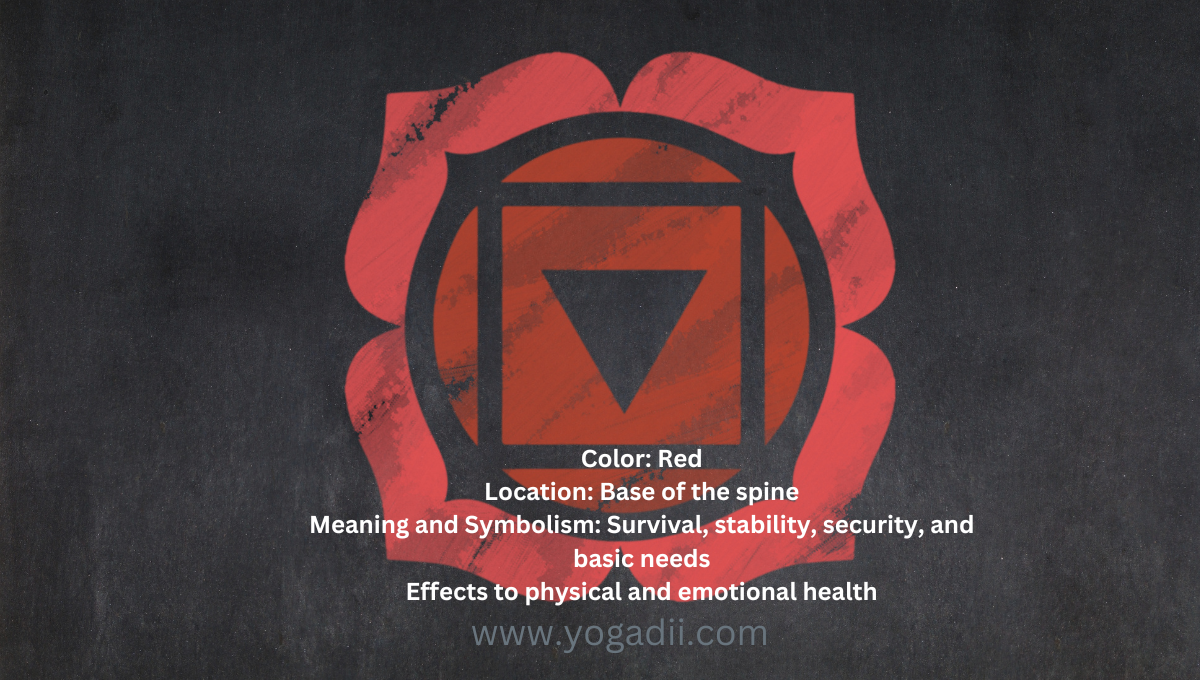
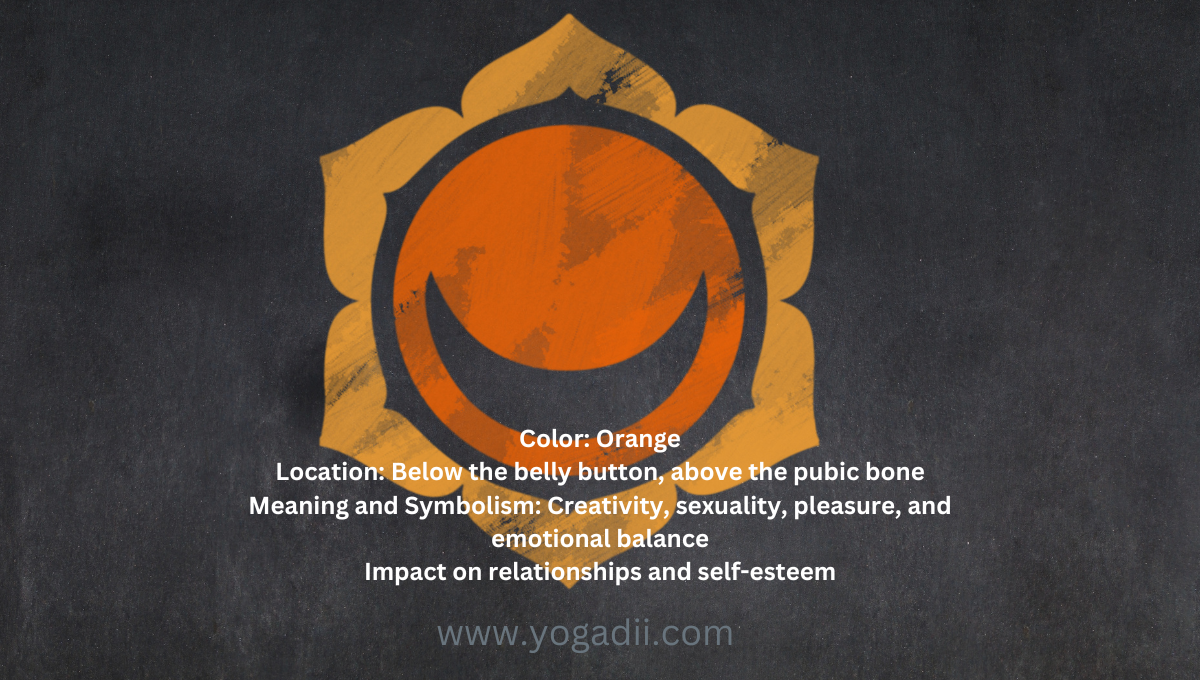
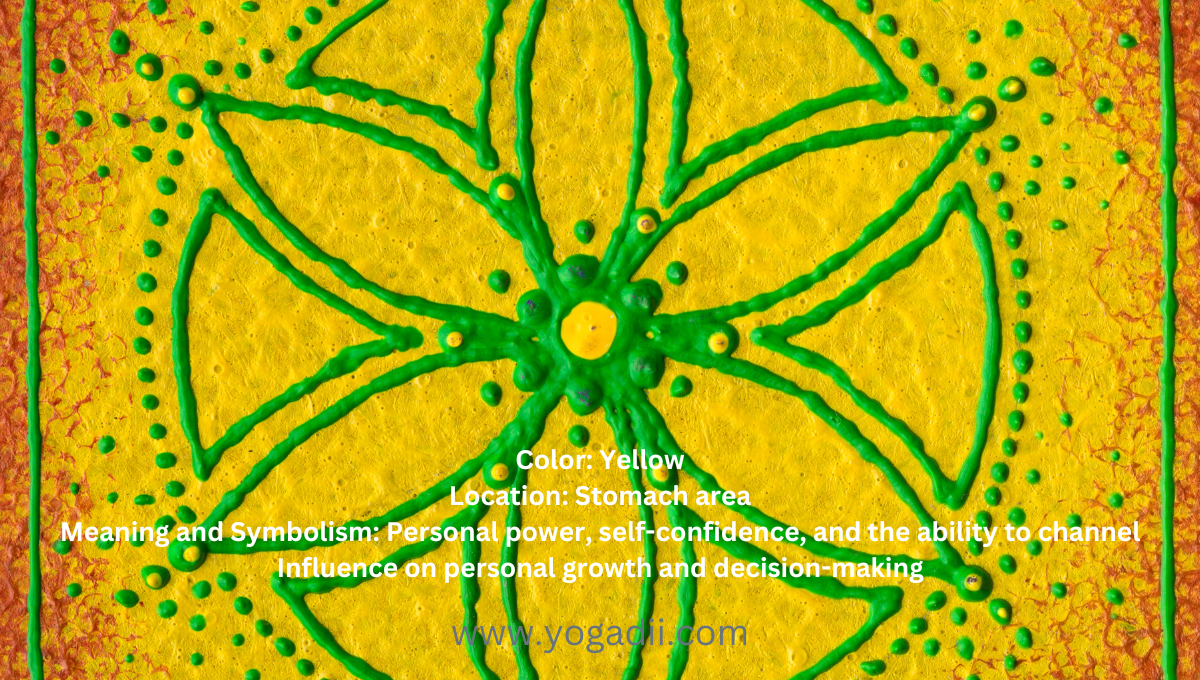
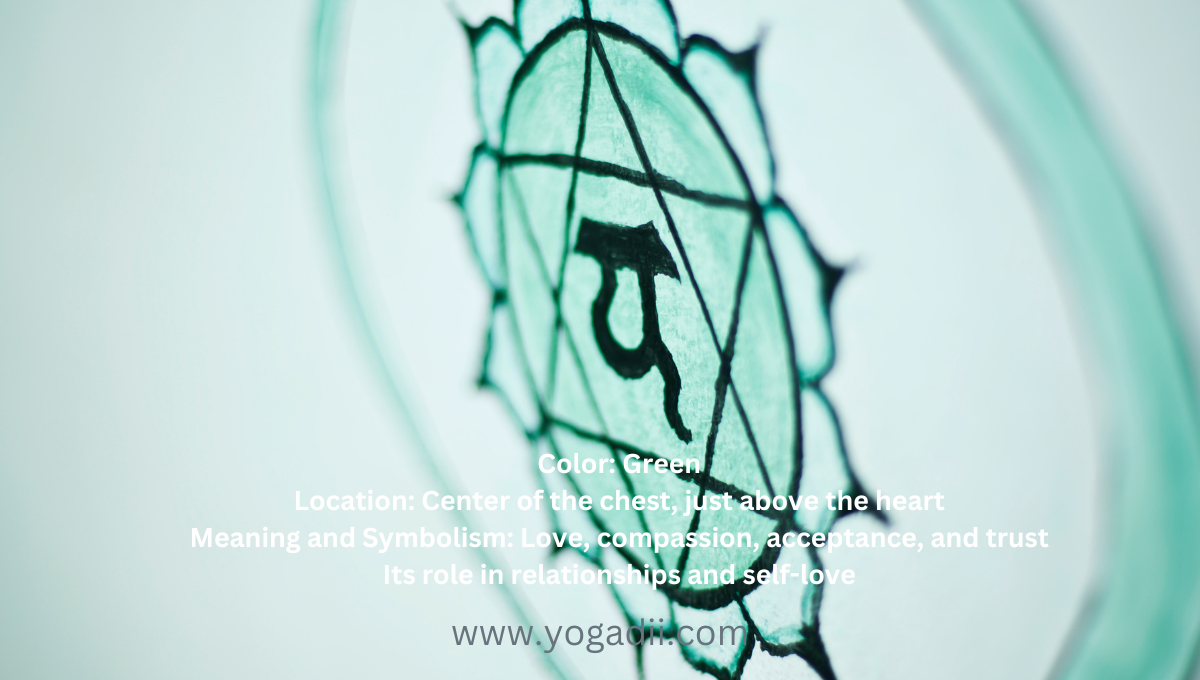

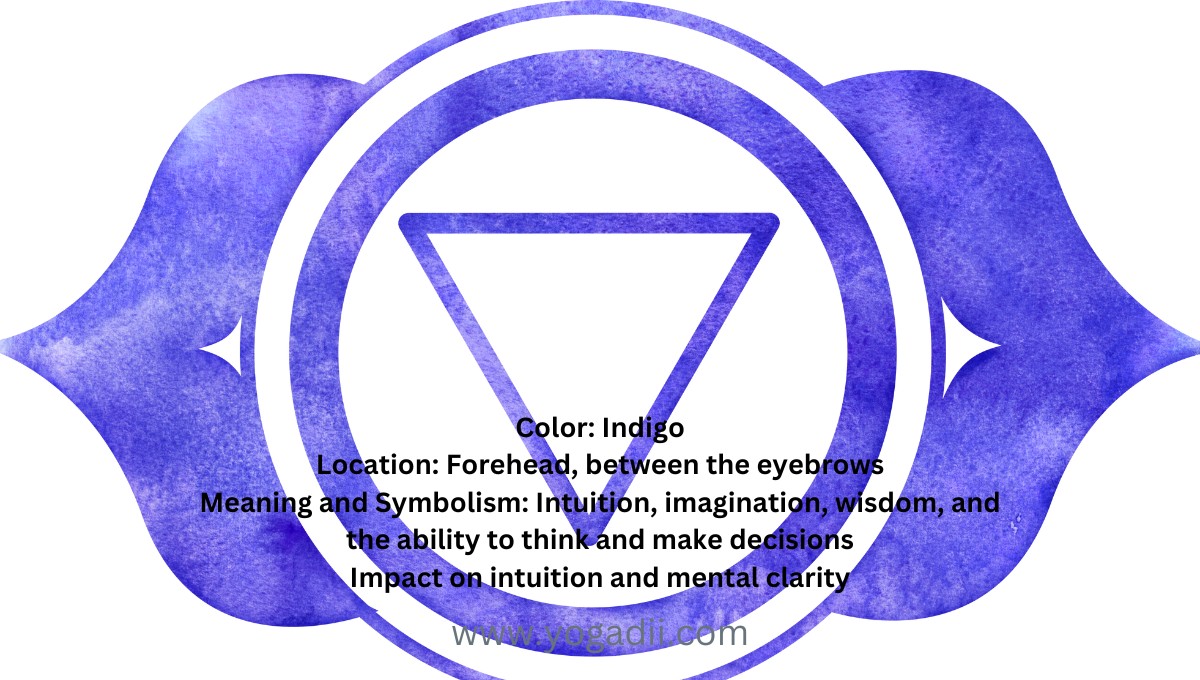
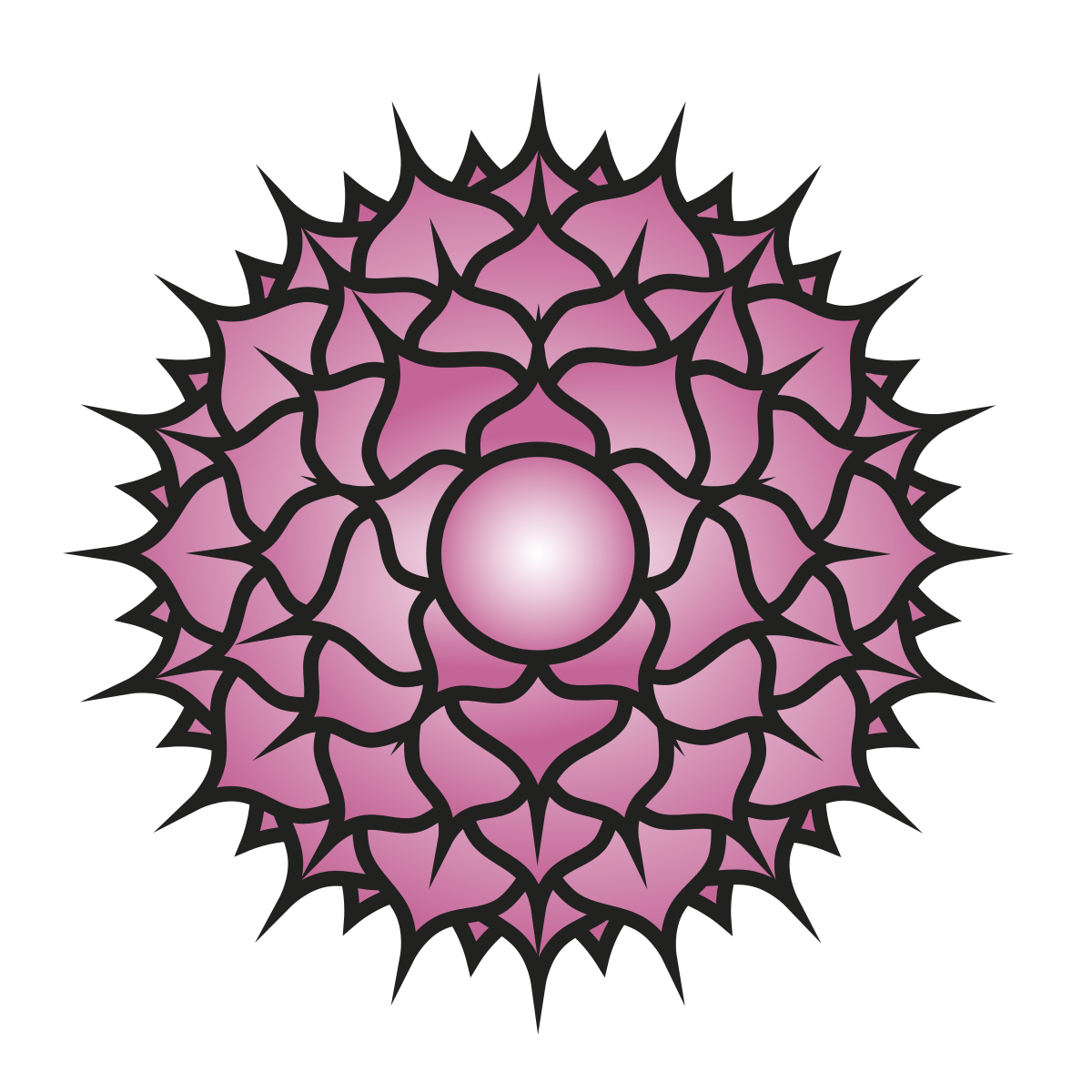
1 thought on “Chakra Colors: Meaning | Symbolism | Location | Functions”